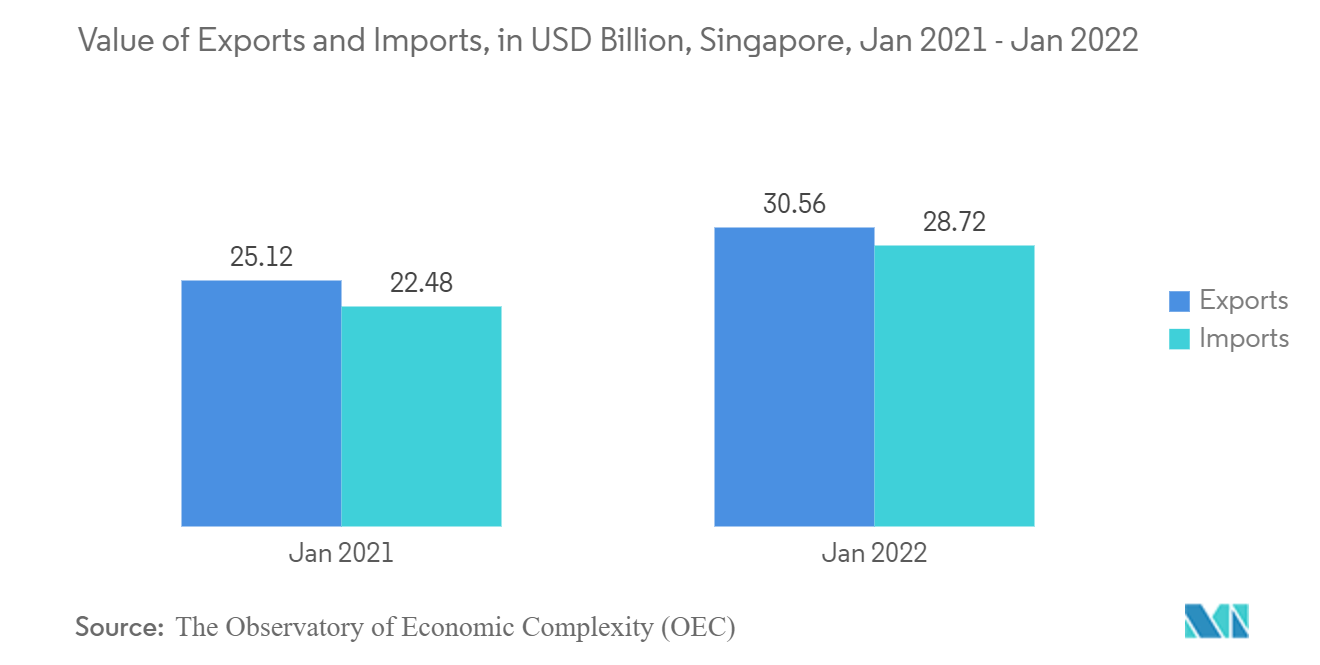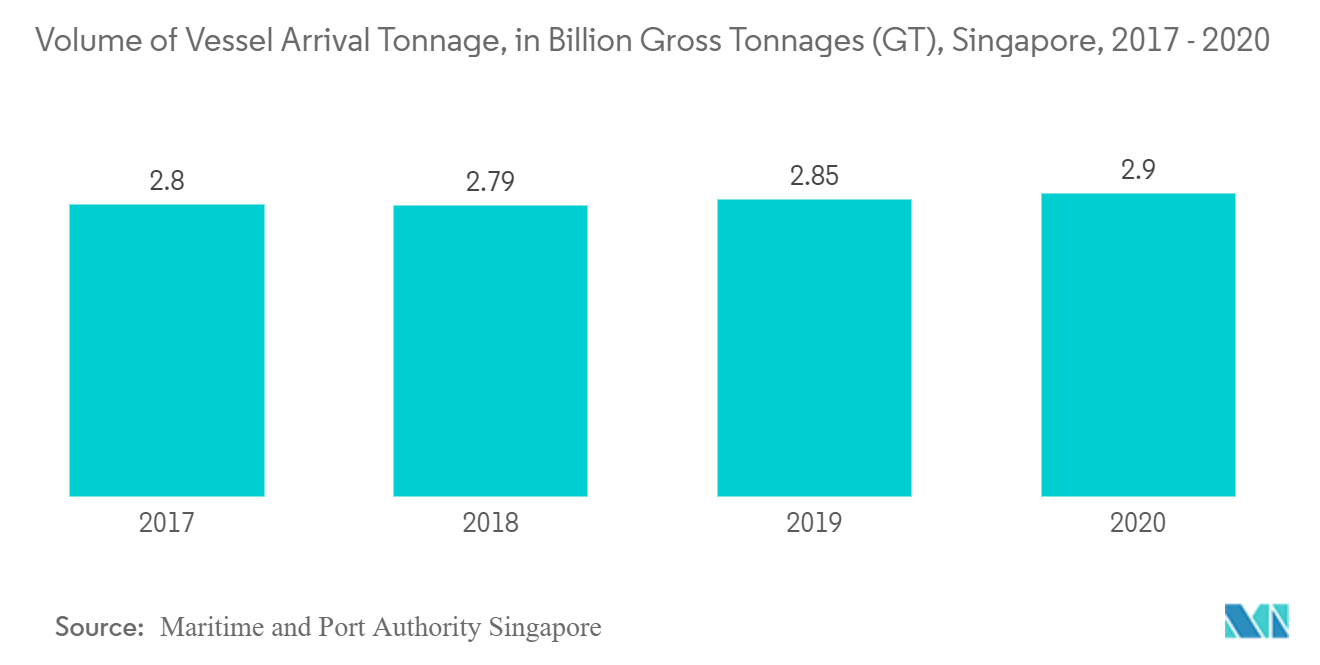Market Trends of Singapore Customs Brokerage Industry
This section covers the major market trends shaping the Singapore Customs Brokerage Market according to our research experts:
Singapore Surge in Imports and Exports Driving the Market
Singapore raised its 2021 trade forecasts for the fourth time amid better-than-expected performance, robust global semiconductor demand, and higher oil prices. However, export growth is forecast to ease sharply in 2022 due to the high base in 2021 and as the economic recovery for Singapore's key trade partners slows.
Singapore's key trade partners, including China, the United States, and Eurozone, are expected to see their growth ease from 2021's pace, though ASEAN and Japan are forecast to grow faster in 2022, having seen their recovery disrupted in 2021. Supply-side issues such as semiconductor shortages and port backlogs may strain supply chains and weigh on trade, though these are unlikely to have a large impact on overall global trade flows.
Singapore's total goods trade increased by 19.1% in the third quarter of 2021, following a 27.3% increase in the second quarter of 2021. Non-oil commerce climbed by 14.6%, but oil trade surged by 50%, owing to higher oil prices compared to a year before, i.e., 2020. Non-electronic product exports increased by 7.1%Y-o-Y in the third quarter, following an 8.5% growth in the second quarter. Specialized machinery increased by 52.8%, petrochemicals increased by 43.8%, and pharmaceuticals increased by 20.4%. Meanwhile, electronics exports increased for the sixth consecutive quarter. They grew 15.3% Y-o-Y in the third quarter, continuing the previous quarter's 15.7% increase. The most significant contributors to the growth in electronic Nodx were integrated circuits, personal computers, diodes, and transistors.
This surge in trade of imports and exports has accelerated the customs brokerage in the seaports and airports of Singapore.

Growth of Sea Cargo Driving the Market in Singapore
Singapore has retained its position as the world's second-busiest container port and the number one bunkering port in 2020, as well as facilitated crew change for more than 80,000 seafarers amid the coronavirus (COVID-19) pandemic. The Port of Singapore has bounced back from a pandemic-induced slowdown, handling more cargo in the first five months of 2021 than in the same periods of 2020 and 2019.
Container throughput in Singapore declined by 0.9% in 2020 due to overseas port closures, shipping delays, and a worldwide container scarcity. Singapore's port grew by 4.6% from January to May 2021 as compared to 2020 and by 3.9% when compared to 2019 prior to the pandemic. Container throughput increased by 4.6% from January to May 2021 when compared to the same period in 2020 and by 3.9% when compared to the same time in 2019, prior to the pandemic.
The investment pipeline for Singapore's maritime sector has also remained healthy amid the pandemic. In 2020, 11 new shipping groups set up shop and 8 maritime companies expanded their operations. In the first five months of 2021, five maritime firms here have either expanded operations or established new ones with support from the Maritime and Port Authority of Singapore (MPA).
Despite the COVID-19 pandemic, the Port of Singapore remained resilient in 2020. As the port remained operational during the pandemic, Singapore's container traffic in 2020 remained relatively consistent. The total container throughput stood at 36.9 million Twenty-foot Equivalent Units (TEUs) in 2021.


